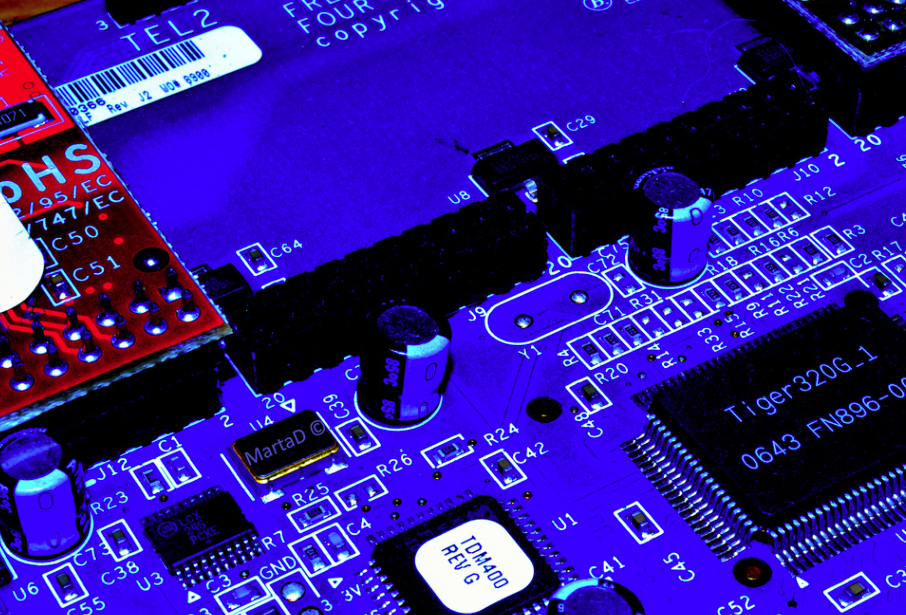
[Image above] Credit: NeferMerit; Flick CC BY-NC 2.0
Electronic devices are facing a revolution—researchers are working to make tomorrow’s consumer technology smaller, more efficient, flexible, and durable with unsurpassed power.
Some researchers are “going organic” when it comes to next-generation devices. Many existing electronic devices use rigid, inorganic materials, so researchers at the Pohang University of Science and Technology in Korea are looking for ways to make electronic devices out of soft, organic materials instead.
Other researchers are taking durability to a whole new level, developing an electronic material that self-heals and restores its functionality post-trauma.
And some researchers are thinking about where our electronic devices end up—which is in landfills—and how to minimize the negative impact discarded electronics can have on our environment by creating self-destructing electronics that disappear before your very eyes.
But scientists at the University of Cambridge in England are taking an in-depth look at how electronics function in a more fundamental way—the way in which information is processed and transmitted.
“To process information, electrical charges are moved around on semiconductor chips; and to transmit it, light flashes are sent down optical fibers,” explains a recent university press release. “Current methods of converting between electrical and optical signals are both inefficient and slow.”
So the team, led by Jeremy Baumberg from Cambridge’s NanoPhotonics Center, in collaboration with researchers in Mexico and Greece, is searching for ways to improve this disparity.
For electronic devices to be faster and more efficient, more transistors need to be placed on the semiconductor chips that power them, the release explains. To keep up with the rapid pace of the electronics revolution, the number of transistors able to be placed on a single chip has doubled every two years for the past five decades (read: Moore’s law).
But those semiconductor chips are shrinking, too. “Scientists now have to deal with the quantum effects associated with individual atoms and electrons, and they are looking for alternatives to the electron as the primary carrier of information in order to keep up with Moore’s law and our thirst for faster, cheaper, and more powerful electronics,” the release explains.
To do this, the Cambridge team built a “miniature electro-optical switch that can change the spin—or angular momentum—of a liquid form of light by applying electric fields to a semiconductor device a millionth of a meter in size,” according to the release.
The switch utilizes a state of matter called a polariton Bose-Einstein condensate to mix electrical and optical signals while using only tiny amounts of energy.
“The condensates are generated by trapping light between mirrors spaced only a few millionths of a meter apart, letting it interact with thin slabs of semiconductor material, creating a half-light, half-matter mixture known as a polariton,” the release explains.

Polariton fluid emits clockwise or anticlockwise spin light by applying electric fields to a semiconductor chip. Credit: Alexander Dreismann
When a lot of polaritons get together, they cause condensation—not unlike how water droplets form at high humidity. The light-matter fluid spins clockwise (spin-up) or anti-clockwise (spin-down). When the team applied an electric field to this system, it could control the spin direction of the condensate. The fluid emits light with each spin direction that can be channeled through optical fibers to communicate electrical-to-optical signals.
“The polariton switch unifies the best properties of electronics and optics into one tiny device that can deliver at very high speeds while using minimal amounts of power,” Alexander Dreismann, researcher at Cambridge’s Cavendish Laboratory and lead author of the study, says in the release.
“We have made a field-effect light switch that can bridge the gap between optics and electronics,” Hamid Ohadi, co-author of the study, adds. “We’re reaching the limits of how small we can make transistors, and electronics based on liquid light could be a way of increasing the power and efficiency of the electronics we rely on.”
The team developed a prototype device that works successfully at cryogenic temperatures, but it’s also working with other materials that can operate at room temperature to hopefully scale up the technology in the not-too-distant future.
“Since this prototype is based on well-established fabrication technology, it has the potential to be scaled up in the near future,” says Pavlos Savvidis, study co-author and researcher from the FORTH Institute in Crete, Greece.
The research, published in Nature Materials, is “A sub-femtojoule electrical spin-switch based on optically trapped polariton condensates” (DOI: 10.1038/nmat4722).
